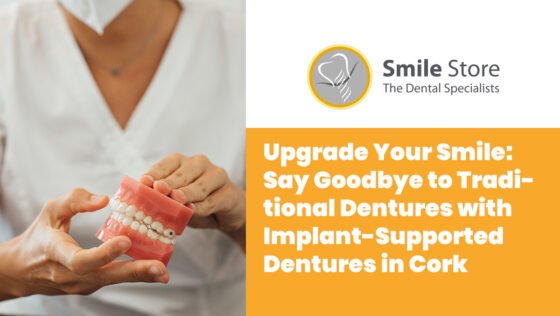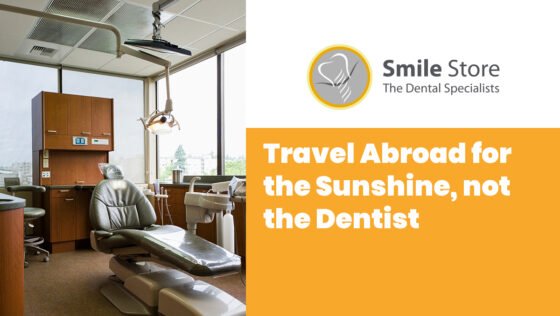Dear Patients,
Due to the COVID19 pandemic, your orthodontist will not be able to see you for a prolonged period.
Also, while to public is instructed to stay home and only leave home for limited purposes, most of the problems you might face with your orthodontic devices, will not classify as an extreme urgency that would require to be seen by a dentist.
Many of these issues are minor and will not compromise the progression of your treatment and can be addressed at your next appointment with your orthodontic clinician.
In the first instance, if you experience a problem with your brace, you are advised to follow the instructions to manage breakages/irritation/ discomfort that were provided by their orthodontic clinician when you had your brace fitted. If however, you are experiencing pain and a high level of discomfort, we would advise you to contact us for further advise via email.
When doing so, please include a precise description of your issue. It will also immensely help the orthodontist to respond, if you take sharp photos and/or shoot a video. The British Orthodontist Society has prepared a video how to create such a video. Please note our email is first accessed by admin staff, so if you are worried about GDPR, do not send us an email, but make an appointment with your orthodontist once the pandemic is over.
Will my orthodontic treatment be prolonged due to COVID19?
You can almost be certain so. To minimize the increase of your treatment time, we’d advise you to maintain an exceptional oral hygiene and meticulously follow instructions in relation to care and maintenance of your device given by the orthodontist and available online.
Please refer to the British Orthodontic Society Patient Information leaflets for further advice relating to the care of your braces. To reduce the need for emergency appointments and a potential increase in the duration of your treatment, it is very important that you
- Avoid hard, sticky and chewy sweets and foods. Remember to cut up foods such apples, carrots and crusty bread before eating them.
- Avoid sticky, chewy or hard sweets, mints and sugared chewing gum
- Preventing damage to the tooth enamel and gums
- Avoid sugary snacks/drinks between meals and at bedtime
- Avoid fizzy drinks (including diet drinks and sports drinks) and large amounts of fruit juice
- Brush your teeth for 2 minutes at least twice a day with a fluoride toothpaste, and remember to floss / use interproximal brush
- Rinse your teeth at a separate time to tooth brushing with an alcohol-free fluoride mouthwash on a daily basis
The British Orthodontic Society has also created some videos to help you while you can’t call to the practice.
Further to the videos, they recommend below home cures for the time being.
Wires digging in
- If a thin wire, it may be possible for the patient or family member touse tweezers to replace wire in the tube/band or tweezers and a nail clipper/scissors to shorten the long end
- It may be that a thin wire is the correct size but may have rotated round the teeth so that it is short on one side and long on the other. Using tweezers a pencil with a rubber on the end or a teaspoon, it may be possible to push the wire back round to prevent the long end digging in.
- If the wire is very thick and stiff (discuss with your HCP) it may not be possible to cut the wire with home instruments. If this is the case it may be necessary to cover the wire to prevent it being sharp. Relief wax/silicone may be sent to you or you can buy it online (Orthodontic Wax) Failing that using a wax covering from hard cheese (baby-bell, cheddar), Blue tack or even chewing gum may help
Broken bonded retainers
- Push wire back down towards the tooth as much as possible. (Fingers or tweezers)
- Cover with best medium available (Ortho wax, Cheese wax, Blu tack, chewing gum)
- Cut the exposed unbonded wire using tweezers and nail clippers/scissors
- Gently pull the wire to remove the whole retainer
- Advise greater use of removable retainers if present
Lost Retainers
- Contact us – it may be that we have access to your final moulds and can make a new retainer remotely which can be posted out to you
- If it is not possible to get a replacement retainer you could consider ordering online a ‘boil in the bag’ (heat mouldable) gumshield to use and wear at night to reduce the risk of relapse (unwanted tooth movement). It should be noted that these appliances aren’t specifically designed to hold teeth in position so the manufacturer cannot be held responsible for any relapse. Please contact us before investing in this strategy to ensure all aspects of this compromise for retention are understood
Gold Chains
- If the gold chain was recently place and is now dangling down, it may be possible to cut it short. Gold is quite a soft metal and it may be possible to cut the chain using some nail scissors or nail clippers. Always hold the loose end with tweezers or similar item. If possible leave at least 5 links through the gum so it can used later by your orthodontic team
- If you have a none dissolvable coloured stitch discuss with your HPC about the feasibility of removing it at home using nail scissors to prevent a minor infection in the gum.
Aligner therapy
- If your current aligner is in good order keep wearing it as much as possible
- If your current aligner is broken or ill fitting, step back to your previous aligner
- If neither option is open to you, ring you HPC for advice – It may be possible to have a new aligner at the correct stage made for you and sent out to you
- Or with advice from your HPC a ‘boil in the bag’ (heat mouldable) gumshield to use and wear at night to reduce the risk of relapse (unwanted tooth movement). It should be noted that these appliances aren’t specifically designed to hold teeth in position so the manufacturer cannot be held responsible for any relapse. Please contact your HCP before investing in this strategy to ensure all aspects of this compromise for retention are understood
Bracket off
This is not urgent unless it is causing trauma to the soft tissues.
- It may be possible your HPC can guide the you on how to remove the bracket from the wire via video if it is causing trauma.
- It may be the possible to leave the bracket if it is not causing any problems at present. Consider contacting your HPC for advice.
Elastic Bands
At this time if you run low or out of elastics your HPC may either send you some more out via the post or advice cessation of wear
Band off
- If band is very loose your HPC may be able to talk you through removal of the band and trimming of the wire depending upon your stage of treatment.
- It may also be also be the case your HPC advises you to leave the band in place. If this occurs please ensure you adhere to good oral hygiene and a low sugar diet to prevent decay under the band and around your tooth.
Band off Quadhelixes, RME, TPA +/- Nance
- Discuss with your HPC about the nature of the looseness and take advice accordingly.
- Push band back onto tooth if it will locate and ensure you adhere to good oral hygiene and a low sugar diet to prevent decay under the band and around your tooth.
Removable/Functional appliances
- Check for comfort and retention
- If unsure about how much to continue to wear the appliance discuss with your HPC
- If fractured or ill fitting do not wear the appliance
Separators
- These should be removed at the earliest opportunity – Attempt removal with end of safety pin, small paper clip or wooden tooth pick
Lost module(s)
- No action required – try and make wire where the module has been lost secure with dental wax, cheese wax or blu tack and chewing gum
Temporary anchorage Devices TADS
- HPC may assist you in removing and springs or elastic chain moving the teeth
Headgear
- Stop wear
Lost spring
- No treatment required
Fractured/Frayed power chain
- Accept situation– most powerchain will denature in 4-6 weeks and become passive
- Remove powerchain with tweezers if necessary
- Cut fayed end as short as possible to improve comfort
Exposed end of wire tie – long ligature or short ligature.
- Re-tuck sharp end under wire/bracket using tea spoon or tweezers
- Remove wire if broken with tweezers if possible
- Cut fayed end as short as possible to improve comfort with nail cutters or scissors
- Cover for comfort using Ortho wax, Cheese wax, Blu tack, chewing gum
Source: British Orthodontic Society
Latest posts
Tax Relief
Tax relief is available on many different dental procedures available at Smile Store – The Dental Specialists.
Call backContact us
Request a call back to met one of our friendly staff!

















